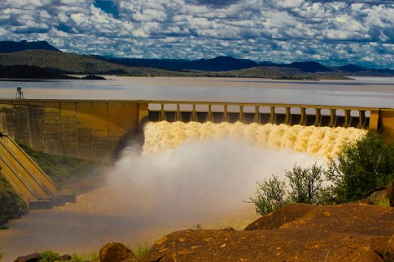In 2013, Global Water Partnership Southern Africa (GWPSA) was contracted to undertake three (3) country based studies in 14 SADC countries on behalf of SADC and GiZ. Three regional collated studies were undertaken on water financing and investment, regional water policy and local indigenous knowledge systems on water security and climate change.
According to the Barbara Schreiner, who made the presentation on behalf of the consultants, the workshop delegates were informed that the studies on Financing water resources management and development were undertaken to assess how finances related to water resources management and infrastructure (not water supply and sanitation) were undertaken at country level. An assessment of these studies were synthesized to examine the expenditure and income associated with:
Managing surface and ground water (including rivers, wetlands, aquifers, lakes and estuaries) in terms of planning & allocating water, protecting& rehabilitating ecosystems, authorising and controlling use and waste discharge, monitoring & information, and strengthening institutions/governance platforms that enabling stakeholders to participate in catchment management; and
Developing and operating water resources infrastructure (including dams, abstraction weirs, inter-basin transfer pump-stations and pipelines, and groundwater abstraction well-fields) in terms of the design, construction, commissioning, operation, maintenance and refurbishment of this infrastructure.
The synthesis report draws attention to the fact that SADC is not a uniform region. Countries are at different stages of development (economically and socially). Countries also have different endowment of water, land and minerals, which may significantly alter the potential for particular economies. Depending on the development context as well as resource endowment of a country, the water resource management and infrastructure requirements may differ. With regards to endowment, countries which are water stressed and have already invested in infrastructure may be considering water resources management more strongly than investing in additional infrastructure. With regards to development context, countries which are less developed may have difficulty financing new infrastructure capital through water user charges alone. This may impact their financing options for additional infrastructure.
In addition a review of the reports indicates that the economy, institutions within each of the SADC countries may differ. There are a range of institutional arrangements across the SADC countries. In some cases a ministry or department is the regulator of water resources management as well as the infrastructure operator. In other cases these functions are split. Institutions may be centralised nationally, or there may be a continuum of institutions from national, catchment, system and local level. Depending on the arrangement of the institutions, potential financing of water resource management and infrastructure may differ.
One of the major observations from this research is the range of development levels countries may be in. These development levels also help to inform the importance of increasing water resources infrastructure or governance. Financing of additional infrastructure is also dependent on the level of development, as increasingly developed countries begin to depend on water use tariffs and charges instead of development or fiscal assistance. Therefore, the report argues that the not so developed countries in term of infrastructure development have to ensure that infrastructure is developed to cope with climate change. Additionally, countries that are developed in infrastructure need to invest to ensure continued climate resilience.
The report evaluates these ranges among the countries and in addition to recommendations made key insights for the primary audiences of the report, namely water managers, government planners and development institutions, which are broadly mandated around water user charges, fiscal allocations and development assistance (the three sources of water resources funding which are linked), respectively.
